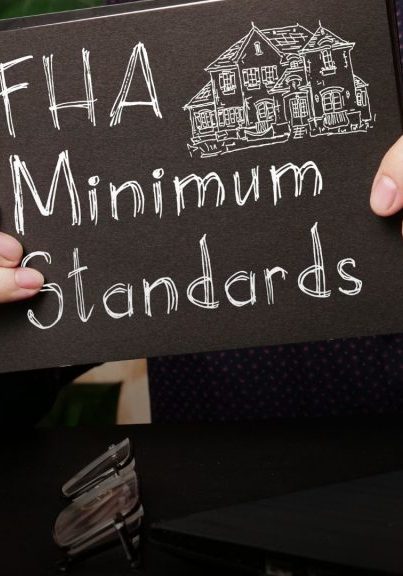
"What's your story?"

"What's your story?"
JASON
STRICKLAND, REALTOR®
Jason Strickland, your trusted REALTOR, is a seasoned, full-time professional dedicated to helping you achieve your real estate goals. With a focus on listing, buying, and expertly guiding first-time homebuyers, Jason's commitment, market savvy, and unparalleled customer service make him the ideal partner for all your real estate needs.
Whether you're seeking to Sell your home, luxury properties, land acquisitions, or property relocation services, Jason is here to make your real estate dreams a reality.

Servicing Knoxville TN and surrounding areas for all of your Real Estate needs.

JASON
STRICKLAND, REALTOR®
Jason Strickland, your trusted REALTOR, is a seasoned professional dedicated to helping you achieve your real estate goals. With a focus on listing, buying, and expertly guiding first-time homebuyers, Jason's commitment, market savvy, and unparalleled customer service make him the ideal partner for all your real estate needs. Whether you're seeking luxury properties, land acquisitions, or property relocation services, Jason Strickland is here to make your real estate dreams a reality.


Properly listing your home is critical. From professional photos, 3D tours, drone work, and a marketing plan, I bring with me the latest technology to ensure you get the most out of your home while providing constant communication to keep you informed every step of the way.
The home-buying process can be tough. Scheduling appointments, writing legal contracts, negotiating with other real estate agents, etc. That's where I come in to take the worry and challenge of home buying and make it simple. Typically at no cost to you!
I have the knowledge and passion to help you with any of your Real Estate needs! I work with all types of clients including:
- LISTING PROPERTIES FOR SALE
- REAL ESTATE BUYER'S REPRESENTATION
- ASSISTING FIRST-TIME HOMEBUYERS
- HIGH-END RESIDENTIAL PROPERTIES
- ACQUISITION OF LAND PARCELS
- SELLING REAL ESTATE LAND PROPERTIES
- PROPERTY RELOCATION SERVICES
Properly listing your home is critical. From professional photos, 3D tours, drone work, and a marketing plan, I bring with me the latest technology to ensure you get the most out of your home while providing constant communication to keep you informed every step of the way.
"I am equipped with the expertise and dedication required to address a broad spectrum of real estate needs. My client base spans across various demographics, including:
- Listing Properties for Sale
- Real Estate Buyer's Representation
- Assisting First-Time Homebuyers
- High-End Residential Properties
- Acquisition of Land Parcels
- Selling Real Estate Land Properties
- Property Relocation Services
The home-buying process can be tough. Scheduling appointments, writing legal contracts, negotiating with other real estate agents, etc. That's where I come in to take the worry and challenge of home buying and make it simple.
REVIEWS
"I want to assure you that every client I work with receives my personal commitment to providing the highest level of service when it comes to selling or buying a property. Communication is a top priority for me, so you can always expect timely and clear communication."
"I'm proud to share that I've received dozens of 5-star reviews from satisfied clients, a testament to the dedication I bring to every transaction. I invite you to experience the difference in the level of service I provide and witness the hard work I put in to help you successfully sell your property or find your dream home. Your satisfaction is my ultimate goal, and I look forward to the opportunity to assist you in your real estate journey." - Jason
Carolyn M
"I have worked with many agents over the years for relocating, adding, and selling investment properties. I have never had anyone more diligent about getting the property ready, ensuring the paperwork was complete well ahead of time, and keeping the lines of communication open than Jason. The entire process could not possibly have gone more smoothly and he gets all the credit for that. Jason treated this sale like it was his own home and made me feel like family."
Angela H
Jason worked day and night to help us find our home. Communication is stellar and always answered our questions. Thank you for getting us through the process of becoming a first-time homebuyer. It went much smoother and faster than I expected!
Susan H
We can't say enough good things about Jason. We traveled to Tennessee from Colorado to find our new home. We chose Jason as our realtor based on his reviews online. We're so grateful that we did! He is very knowledgeable, professional, and patient- we ran him all over the Knoxville area looking at several houses. Thanks to Jason we are settling into our new home in Tennessee.
Featured Properties

0K
HOMES SOLD IN 20220B
SALES VOLUME IN 20220
OVERALL SATISFACTIONMARKET
TRENDS
The market is always changing, and as a consumer you want to be able to make the most informed real estate decisions.
Our local expertise combined with powerful data and a suite of technology tools ensure that we have accurate and comprehensive market data and insights you need to stay in the know.
BLOG
Market Update: Powell, TN DEC 2023
Market Update: Powell, TN 37849 Hey there, buyers and sellers! Jason Strickland, your trusted REALTOR® from Wallace Real Estate, is here with the latest scoop on the housing market in Powell. Let’s dive into the numbers and trends for December 2023. Months Supply of Inventory: We currently have a healthy 1.47 months supply of inventory […]
Read More...Essential Guidelines for FHA Inspections and Appraisals in 2023
FHA INSPECTION AND APPRAISAL GUIDELINES If you’re engaged in a home sale or purchase involving an FHA loan, being aware of the FHA inspection process is crucial. This comprehensive inspection, paid for by the buyer, goes beyond a typical appraisal. Understanding the Distinctions: FHA Inspection vs. Appraisal An FHA inspection delves deep into the home’s […]
Read More...2023 FANTASY OF TREES
2023 FANTASY OF TREES When: Nov. 22, 2023 – Nov. 26, 2023 Presented By: East Tennessee Children’s HospitalPrice: Adults – $10 Seniors (60+) – $8 Children (4-12) – $5 Children (3 and under) – Free Fantasy 4 Pack (Online Only) The beloved East Tennessee Children’s Hospital Fantasy of Trees, sponsored by Axle Logistics, is […]
Read More...Tax Ramifications of Gains from Selling Your Residence
Many individuals selling their homes may find their profits are usually exempt from taxation, and some may not even need to report the sale to the IRS. However, certain exceptions exist, and understanding the rules for excluding profit from your taxable income can help minimize your tax liability. Do I Need to Pay Taxes on […]
Read More...Housing market predictions for 2024
Curious about the U.S. housing market’s outlook for the next five years? The housing market is a dynamic and ever-evolving landscape, making precise predictions a challenging task. However, considering current trends and expert insights, we can anticipate a few significant developments in the near future. In this article, we will delve into housing market projections […]
Read More...Current Mortgage Rates
JASON
STRICKLAND
"No matter what your need is, I am confident I can help! Whether you are looking to Sell your home, purchase a home, relocate to TN, or Sell or Buy land properties. I have the experience and drive to get you where you want to be!
Words are easy. Executing is what matters. Give me a call and experience the difference in working with a REALTOR who is extremely passionate about your needs and wants."
Contact me today and let's get started!
-Jason




























